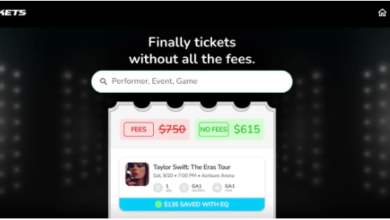Things to remember when buying a used car
When did you last buy a used car? Even if every car you’ve bought has been pre-owned, with changes in working patterns and commutes it could be a while since you’ve set foot on a dealer’s forecourt – or these days, browsed for online options.
Even as car technology has changed, sellers haven’t; buying a secondhand car is as varied and stressful as it ever has been, but you can remove some of that stress if you remember a few key tips.
With used car values subject to seasonal changes and indeed, sudden shifts in trend as diesel cars become less popular, or electric car demand increases, it’s worth making your shortlist first, then getting a car valuation for the models you’re interested in so you can limit your search further by price; that should weed out the overpriced and badly-listed examples.
Stage one: searching
If you want an experience closer to a new car purchase, then start with approved-used schemes from the manufacturers. These days the schemes can cover cars much older than the once-common limit of three to five years old, and they even include the best trade-ins from other brands. Toyota is a particularly good choice at the moment, as their cars benefit from up to ten years of warranty cover (choose a low mileage one, and get it serviced by a dealer).
If It’s a cheaper, more unusual, or cash purchase, begin by casting a wide net. Many dealers advertise on more than just one website, and there are benefits to searching nationally even if you do need to get transport to collect a car. You’ll find cars on eBay, Facebook, Gumtree, listings on Parkers, and each platform will offer different levels of detail or size of images; if there’s a car you like the look of but can’t see the detail, check other websites for the same dealer’s ads.
Save time before you enquire by getting an MOT history check if the number plate is visible. Private sellers who block the numberplates should fall to the bottom of your shortlist – they’re probably hiding something – as a quick look at https://www.check-mot.service.gov.uk/ will reveal everything that may affect the car’s roadworthiness (and whether it’s been repaired) as well as an independent record of the displayed mileage.
Buying from different parts of the UK can get you very different levels of rust and wear, too – as a rule, cars from coastal and Northern areas get more salt and road salt exposure and cars from the South West and other hilly areas have had harder-working clutches, brakes, and gearboxes for example. It’s worth traveling outside of these areas to get cars from the Midlands and south in favor of locally-owned examples.
Stage two: testing
Make sure you’re insured before taking to the road. Unless your own insurance explicitly states that you have a third-party cover (and if you are a named driver on a policy, you probably won’t have it) then you will need to be added to the owner’s cover or to get day cover. The exception to this is when looking at a car from a dealer, but be aware that smaller dealers may not have the required insurance. Take a torch, some latex gloves, and something to kneel on so you’re not discouraged from checking the car underneath by bad weather and dirt.
Before test driving, check the car’s oil, coolant, and tyres yourself, or ask the seller to show them. You don’t need to be an expert, just make sure that the coolant is reasonably clean (it will usually be blue, greenish, or pinky-orange, but worry if it’s oily or rusty looking) and that the oil is between the marks on the dipstick. If it’s solid black and thick on a petrol car, make a note that it’s been neglected (diesel look like that fairly quickly). Check the brands on the tyres match side-to-side – it doesn’t matter as much matching front to back – and that there’s a reasonable amount of tread all the way across.
Once you’re satisfied the car is safe to test drive, don’t be offended if the owner wants to come with you, but remember any current guidance around sanitizing and safety. If the owner doesn’t want you to drive, that’s a red flag, but they may just be nervous – selling a car is stressful too; perhaps suggest they drive the car a certain distance, and then you drive it back.
If you’re happy with how it drives, make sure you test all the gadgets as well as look at the bodywork. Electric windows, mirrors, and heater functions are easily overlooked, and frustrating if they fail right after you get the car!
Stage three: buying
These days the paperwork and payment side is easy. Make sure the owner’s details and address match on the V5 document and where you are buying the car, and that the car’s VIN and registration number match the paperwork. Usually, you’ll find the VIN on the passenger side of the dashboard visible through the windscreen, but it’ll also be on a plate under the bonnet or inside a door shut.
Double-check the VIN against that recorded on the MOT as well. When you’re looking at the V5 you can use the reference number for a more detailed MOT history. Unless the car is clearly very old and very cheap, you should also get an HPI check to make sure there is no outstanding finance secured on it.
Take a note of the owner/seller’s details, as when you apply for a new V5 these are now removed. Get a receipt for your payment, clearly stating the car make/model, registration, and mileage at the very least – it’s worth remembering that the V5 is only the legal keeper, not the owner – a receipt shows that you at least bought the car in good faith, and can be useful if the seller is a trader pretending to be a private seller.
If you can pay by credit card. Most private sellers won’t want to do this, but you get a degree of protection against fraud. Regardless of how you pay, make sure you have the car and paperwork in hand; many fraudulent sellers have used recent restrictions to promise delivery of cars and then fail to deliver.
Getting the V5 in your name can be done online, between 7 am and 7 pm. You will need to tax the car straight away, as the change of keeper automatically makes a SORN declaring the car off the road. For this reason alone, it’s better value to buy a car – or at least, collect it from a dealer – in the first week of the month.
You should have a V5 in your name in a matter of days. If you’ve just bought an older car in a private sale, we’d recommend getting it a proper service from a trusted garage if you don’t do it yourself, and that should ensure any past neglect is taken care of and you can just enjoy it for years to come.





